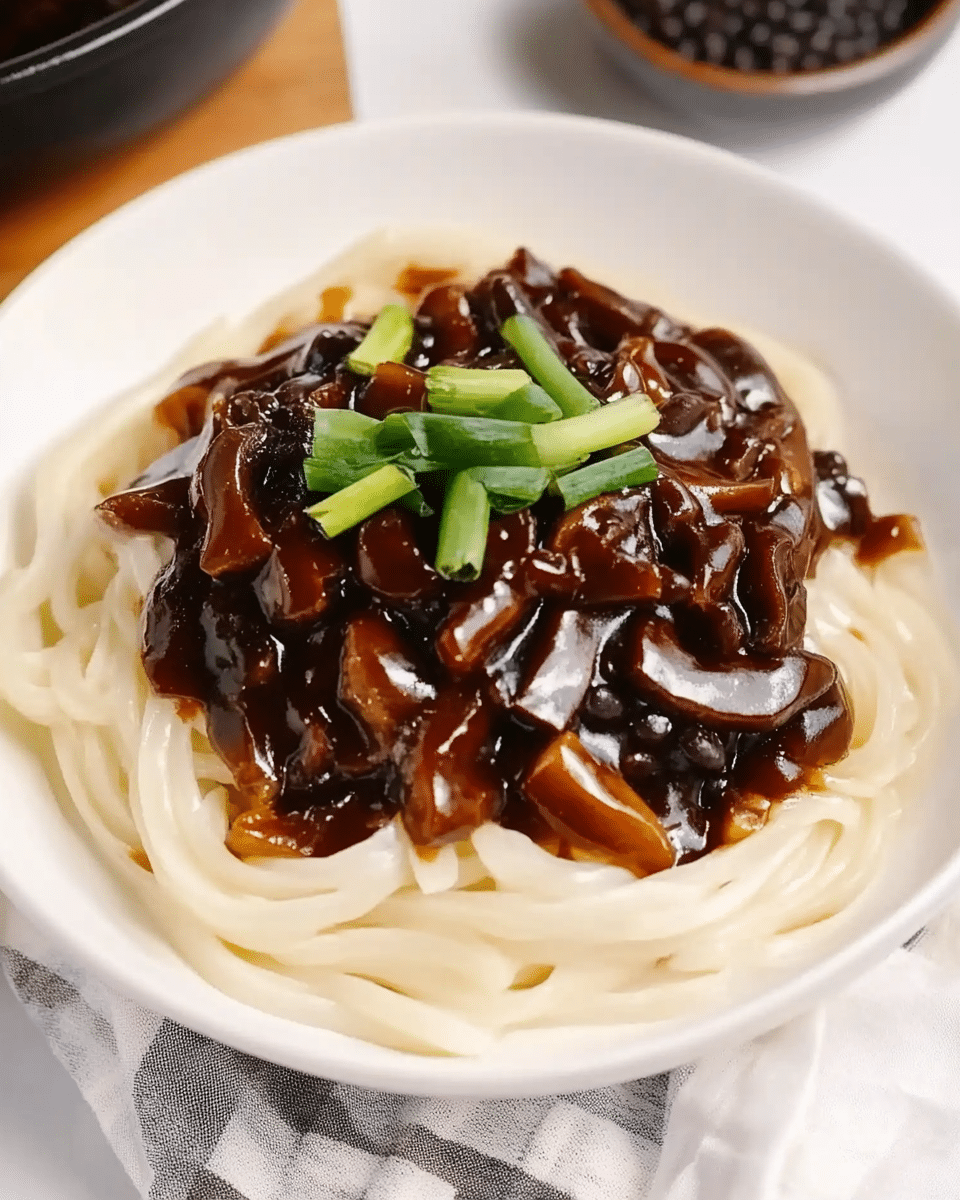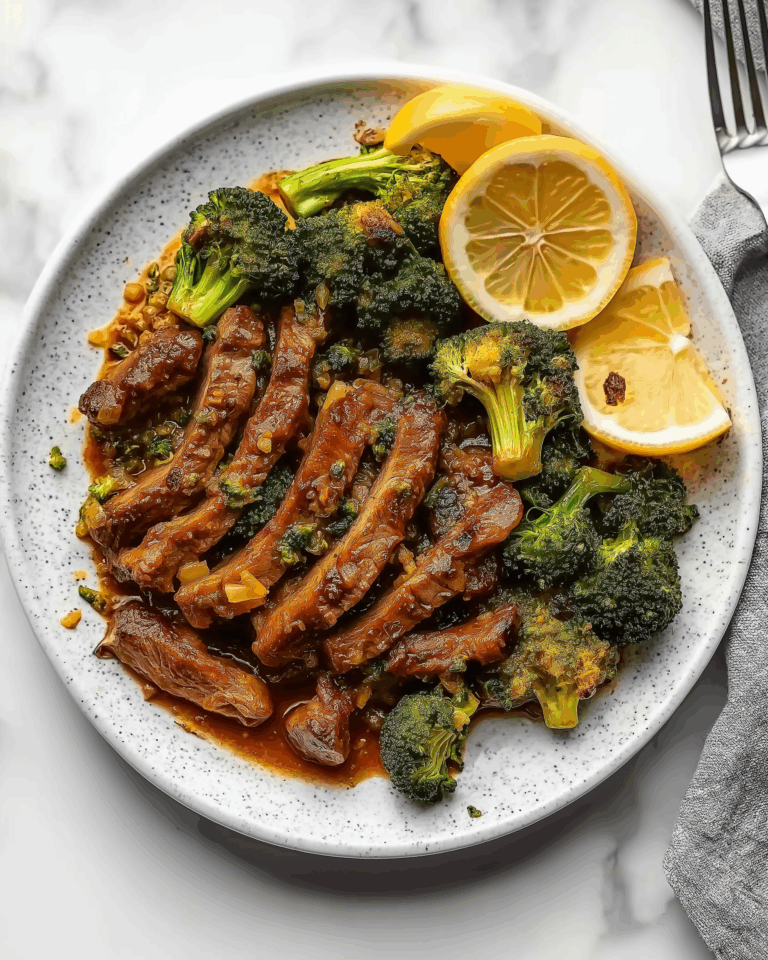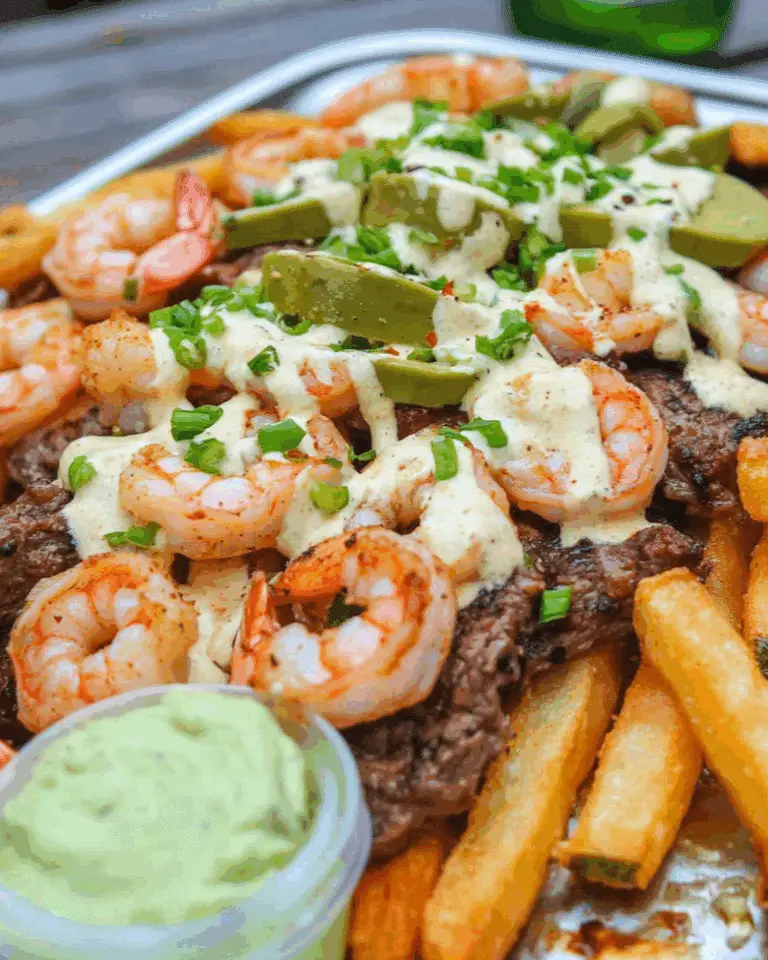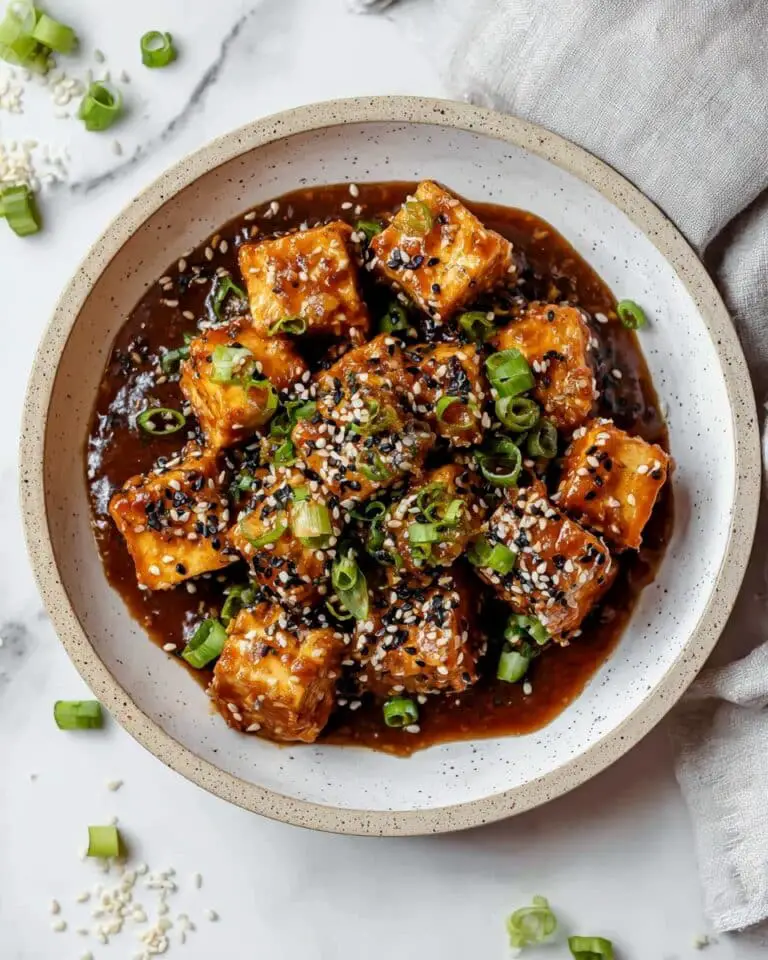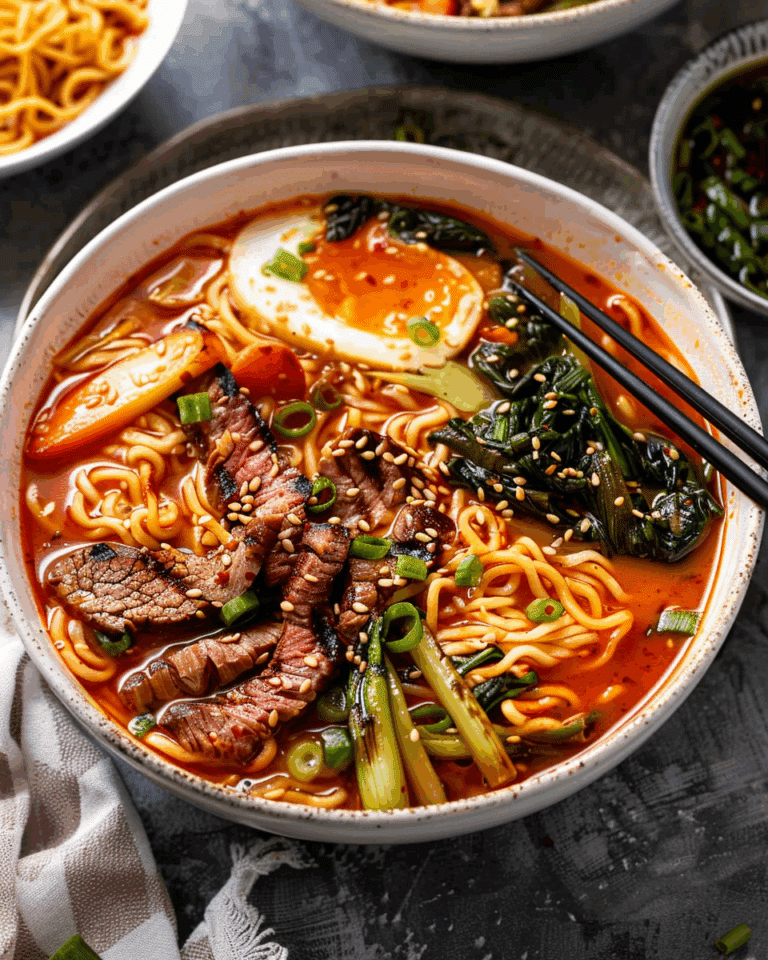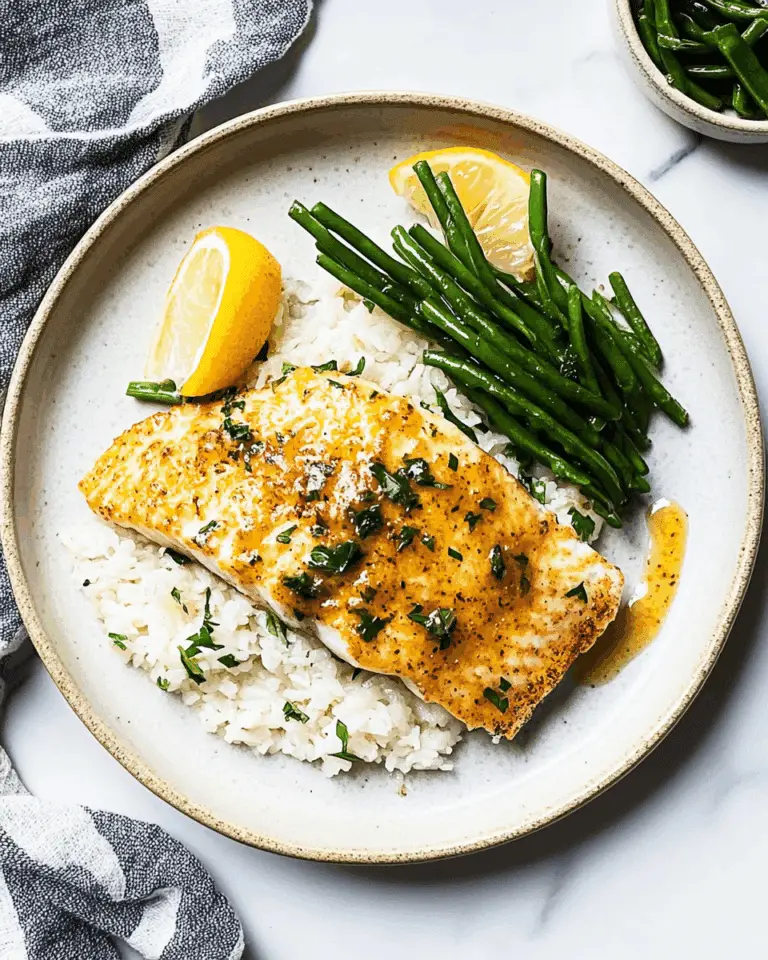Jajangmyeon is a comforting and savory Korean noodle dish featuring a rich black bean paste sauce, tender noodles, and a mix of fresh vegetables. This delicious dish is perfect for any occasion, offering a satisfying and flavorful meal that is both easy to make and packed with authentic flavors. Whether you’re craving something savory for lunch or dinner, Jajangmyeon is the answer!
Why You’ll Love This Recipe
Jajangmyeon is one of Korea’s most beloved comfort foods, and for good reason! The combination of the savory black bean sauce, fresh veggies, and chewy noodles creates a perfectly balanced dish that’s both hearty and satisfying. It’s a great option for anyone looking for a delicious and filling meal with rich flavors. Plus, this recipe is simple to prepare, making it an ideal weeknight dinner that the whole family will enjoy!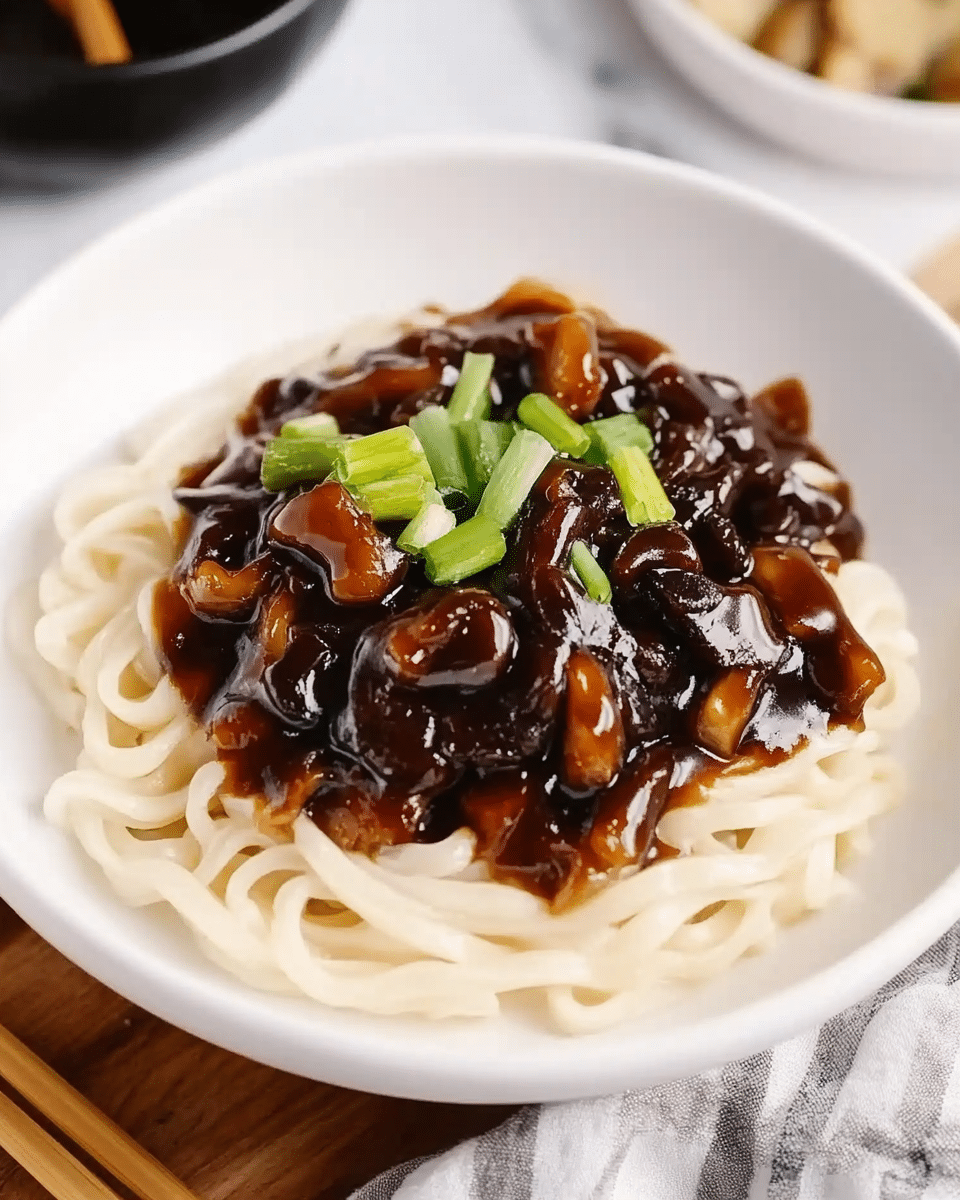
Ingredients
For the Jajangmyeon Sauce:
-
⅔ cup Korean black bean paste (chunjang)
-
¼ cup oil (any neutral oil)
-
3 tablespoons garlic, minced (about 5-6 cloves)
-
1 tablespoon ginger, peeled and minced (about ½ inch)
-
1 medium yellow onion, small diced
-
10 ounces green cabbage, roughly chopped (about 2 cups)
-
1 Korean zucchini (or regular zucchini), small diced
-
2 cups water
-
3 tablespoons oyster sauce (or vegetarian oyster sauce)
-
2 tablespoons granulated sugar
-
3 tablespoons cornstarch (mix with 3 tablespoons water to make cornstarch slurry)
The Rest of the Dish:
-
4 bundles Korean fresh noodles
-
English cucumber, julienned (optional, for garnish)
-
Kimchi (optional, for serving)
-
Danmuji pickled yellow radish (optional, for serving)
(Tip: You’ll find the full list of ingredients and measurements in the recipe card below.)
Directions
1. Stir Fry the Black Bean Paste (Chunjang):
In a small nonstick saucepan over medium heat, add the oil. Once the oil is hot, add the black bean paste and stir-fry for about 2 minutes until it becomes fragrant. Stir constantly, then remove the paste from heat and set aside.
2. Make the Jajangmyeon Sauce:
In a large saucepan or pot, drain any excess oil from the fried black bean paste. If needed, add a little more oil to coat the bottom of the pan. Heat over medium-high heat and add the garlic and ginger. Stir-fry for about 10-20 seconds until fragrant.
Add the onion, zucchini, and cabbage, and stir-fry for a few minutes until the cabbage starts to soften. Add the stir-fried black bean paste to the pan and mix well until everything is coated.
3. Simmer the Sauce:
Add the water, oyster sauce, and sugar to the pan, and bring to a boil. Reduce the heat to a simmer and cook for about 10-15 minutes, adjusting the saltiness to taste. The sauce should be well-combined and flavorful.
4. Cook the Noodles:
While the sauce simmers, cook the noodles according to the package instructions. Drain and rinse with water to remove excess starch, especially if using Korean fresh noodles. Set the noodles in bowls.
5. Finish the Sauce and Serve:
Mix the cornstarch slurry (3 tablespoons cornstarch mixed with 3 tablespoons water) and slowly drizzle it into the simmering sauce, stirring constantly. Let the sauce simmer for a few more seconds until it thickens and becomes glossy.
Pour the sauce over the noodles and garnish with julienned cucumber, if desired. Serve with kimchi and pickled radish (danmuji) for an authentic touch.
Servings and Timing
-
Prep Time: 10 minutes
-
Cook Time: 25 minutes
-
Total Time: 35 minutes
-
Servings: 4 servings
Variations
-
Meat Option: Add diced beef, or chicken to the sauce for extra protein. Just stir-fry the meat with the vegetables before adding the black bean paste.
-
Vegan Version: Use vegetarian oyster sauce and skip the meat or substitute with tofu for a vegan-friendly version.
-
Vegetable Boost: Add more vegetables like carrots, mushrooms, or bell peppers to the sauce for added texture and nutrition.
Storage/Reheating
-
Storage: Store any leftovers in an airtight container in the refrigerator for up to 2-3 days.
-
Reheating: Reheat the dish in a pan over medium heat, adding a splash of water if needed to loosen the sauce.
FAQs
1. Can I use regular black bean paste if I can’t find chunjang?
Chunjang is the preferred black bean paste for this dish, as it has a specific flavor that is crucial to the dish. If you can’t find it, you can substitute with regular black bean paste, but the flavor will be slightly different.
2. Can I make Jajangmyeon spicy?
Yes! If you enjoy spicy food, feel free to add some chili paste or red pepper flakes to the sauce for a spicy version of Jajangmyeon.
3. What can I use instead of Korean zucchini?
You can substitute Korean zucchini with regular zucchini, but if you want the authentic texture and flavor, try to use the Korean variety. It’s slightly different but still works well in this dish.
4. Can I use other vegetables?
Yes, you can add other vegetables like mushrooms, carrots, or bell peppers to the dish. Simply stir-fry them along with the cabbage and zucchini before adding the black bean paste.
5. Can I make this dish ahead of time?
Yes, you can make the sauce ahead of time and refrigerate it. When ready to serve, just cook the noodles and reheat the sauce on the stove before combining them.
6. Can I freeze leftover Jajangmyeon?
While Jajangmyeon is best served fresh, you can freeze the sauce for up to a month. Just reheat it when you’re ready to serve, and cook fresh noodles.
7. How do I store the noodles?
It’s best to cook the noodles fresh for each serving. If you have leftovers, you can store them in the refrigerator, but they may lose some of their texture when reheated.
8. Can I make Jajangmyeon without meat?
Absolutely! Jajangmyeon can be made vegetarian or vegan by skipping the meat and using tofu or more vegetables instead.
9. Can I use regular noodles instead of Korean noodles?
You can use any noodles you like, but the chewy texture of Korean fresh noodles is ideal for Jajangmyeon. If you use other noodles, the texture may be slightly different.
10. Can I use cornstarch to thicken the sauce?
Yes, cornstarch is used in this recipe to thicken the sauce and give it the signature glossy texture. The slurry should be added slowly to avoid clumps.
Conclusion
Jajangmyeon is a delicious, comforting Korean noodle dish that’s perfect for any occasion. The savory black bean paste sauce, fresh vegetables, and tender noodles come together for a satisfying meal that is full of flavor. This recipe is easy to make, packed with flavor, and sure to be a hit with anyone who loves Korean cuisine!
Print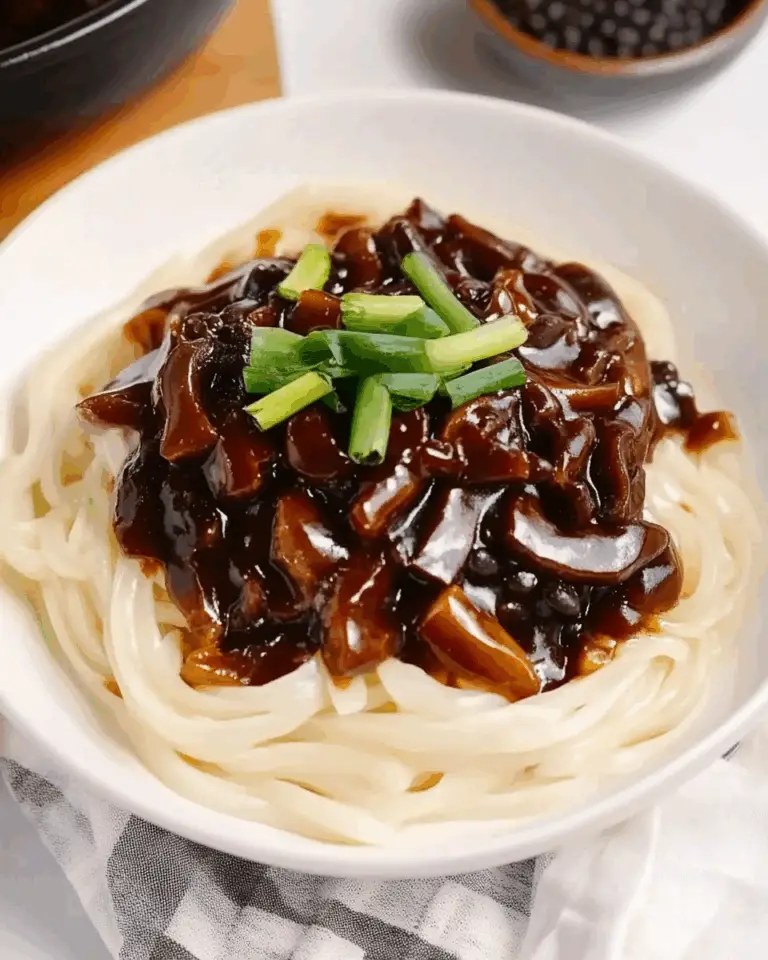
Jajangmyeon (Korean Black Bean Noodles)
Jajangmyeon is a savory and comforting Korean noodle dish featuring a rich black bean sauce, tender noodles, and fresh vegetables. This easy-to-make dish is full of flavor and perfect for any occasion, whether you’re craving a quick dinner or hosting friends.
- Total Time: 35 minutes
- Yield: 4 servings
Ingredients
- For the Jajangmyeon Sauce:
- ⅔ cup Korean black bean paste (chunjang)
- ¼ cup oil (any neutral oil)
- 3 tablespoons garlic, minced (about 5-6 cloves)
- 1 tablespoon ginger, peeled and minced (about ½ inch)
- 1 medium yellow onion, small diced
- 10 ounces green cabbage, roughly chopped (about 2 cups)
- 1 Korean zucchini (or regular zucchini), small diced
- 2 cups water
- 3 tablespoons oyster sauce (or vegetarian oyster sauce)
- 2 tablespoons granulated sugar
- 3 tablespoons cornstarch (mix with 3 tablespoons water to make cornstarch slurry)
- For the Rest of the Dish:
- 4 bundles Korean fresh noodles
- English cucumber, julienned (optional, for garnish)
- Kimchi (optional, for serving)
- Danmuji pickled yellow radish (optional, for serving)
Instructions
- Stir Fry the Black Bean Paste (Chunjang): In a small nonstick saucepan over medium heat, add the oil. Once hot, add the black bean paste and stir fry for about 2 minutes until fragrant. Stir constantly, then remove from heat and set aside.
- Make the Jajangmyeon Sauce: In a large saucepan or pot, drain any excess oil from the fried black bean paste. Add a little more oil if needed to coat the bottom of the pan. Heat over medium-high heat and add the garlic and ginger. Stir fry for 10-20 seconds until fragrant. Add the onion, zucchini, and cabbage, stir frying for a few minutes until the cabbage softens. Add the stir-fried black bean paste and mix well until everything is coated.
- Simmer the Sauce: Add the water, oyster sauce, and sugar to the pan, and bring to a boil. Reduce heat to a simmer and cook for about 10-15 minutes, adjusting saltiness to taste.
- Cook the Noodles: While the sauce simmers, cook the noodles according to package instructions. Drain and rinse with water to remove excess starch (if using Korean fresh noodles). Set the noodles in bowls.
- Finish the Sauce and Serve: Mix the cornstarch slurry and slowly drizzle it into the simmering sauce, stirring constantly. Let the sauce simmer for a few more seconds until it thickens and becomes glossy. Pour the sauce over the noodles and garnish with julienned cucumber if desired. Serve with kimchi and pickled radish for an authentic touch.
Notes
- You can adjust the sweetness and saltiness of the sauce by modifying the amount of sugar or soy sauce.
- For extra texture, add some sliced beef, or tofu to the sauce while simmering.
- If you can’t find Korean zucchini, regular zucchini works just fine.
- Prep Time: 10 minutes
- Cook Time: 25 minutes
- Category: Main Dish
- Method: Stovetop
- Cuisine: Korean
Nutrition
- Serving Size: 1 serving
- Calories: 350 kcal
- Sugar: 14g
- Sodium: 720mg
- Fat: 9g
- Saturated Fat: 1g
- Unsaturated Fat: 8g
- Trans Fat: 0g
- Carbohydrates: 52g
- Fiber: 5g
- Protein: 12g
- Cholesterol: 30mg

